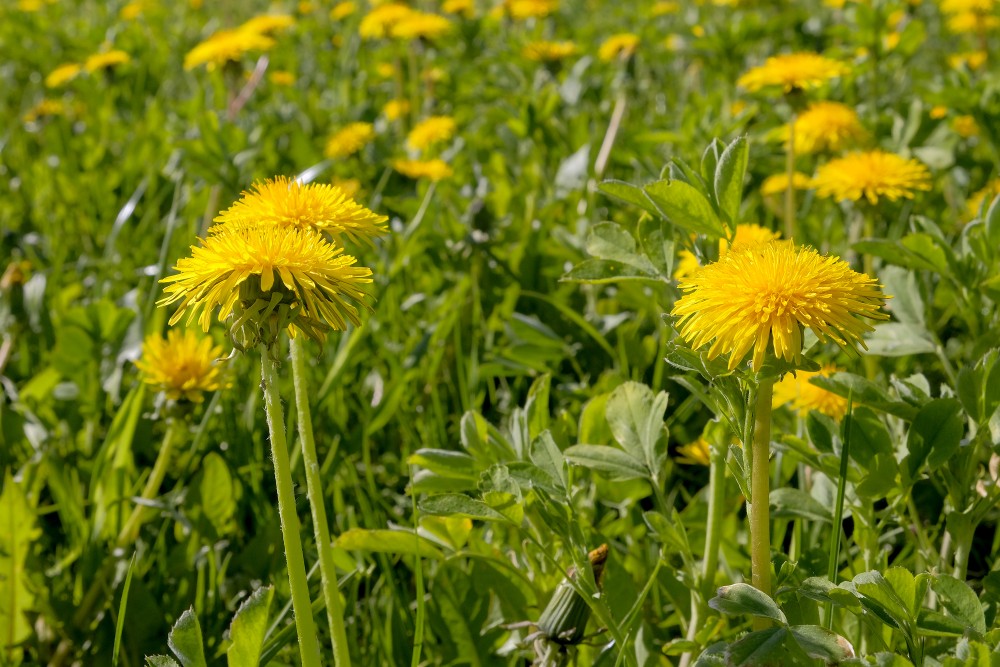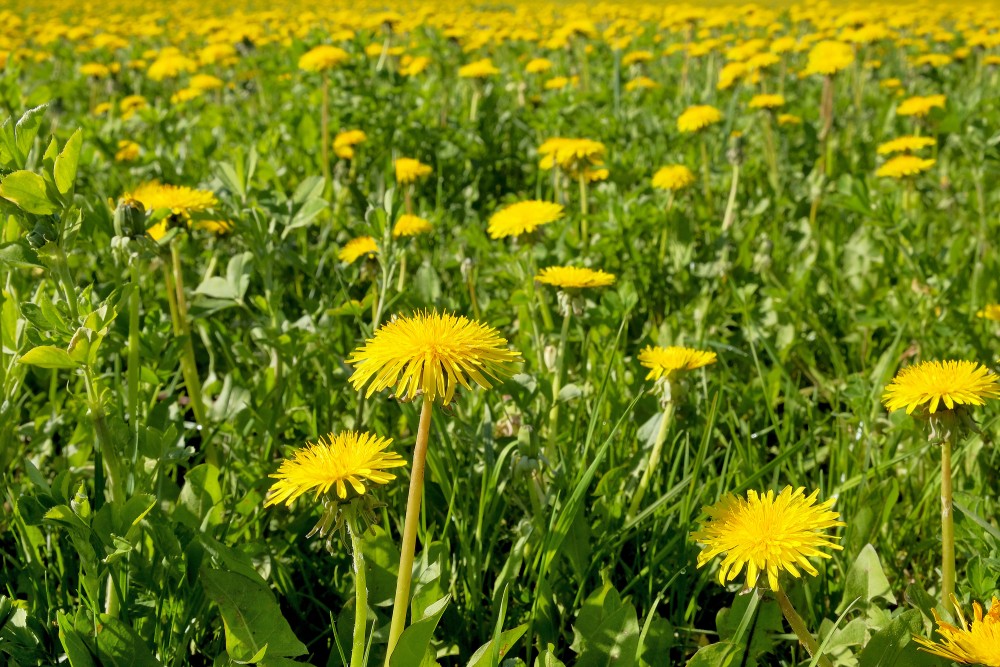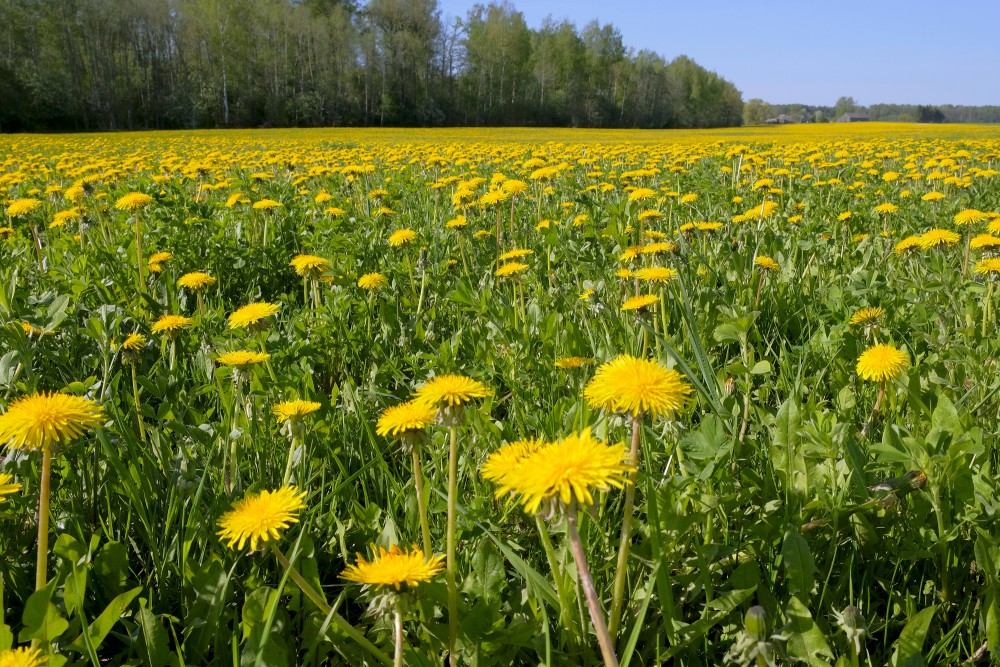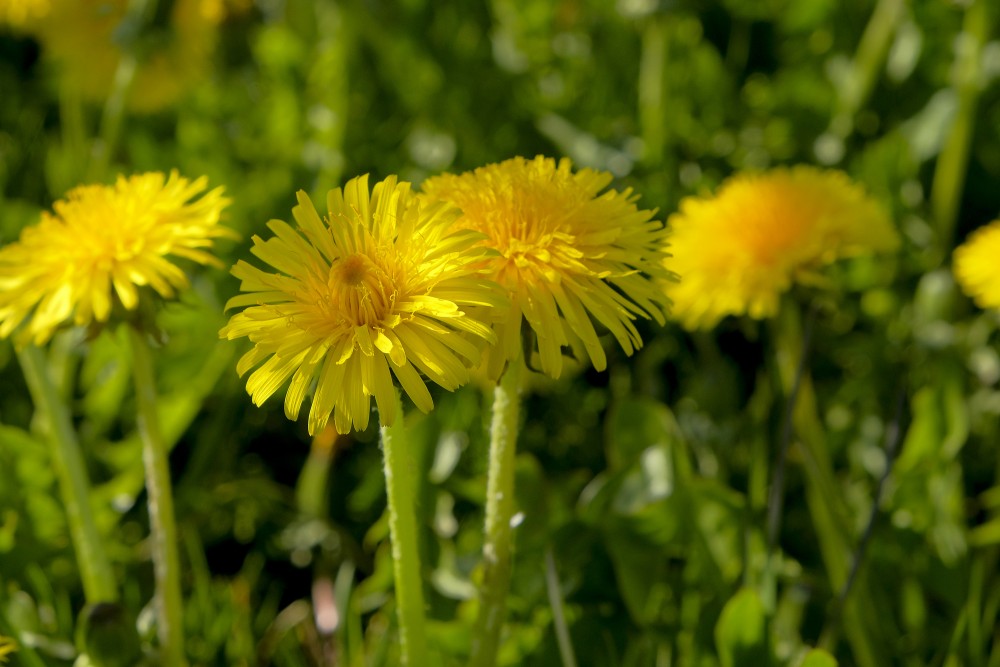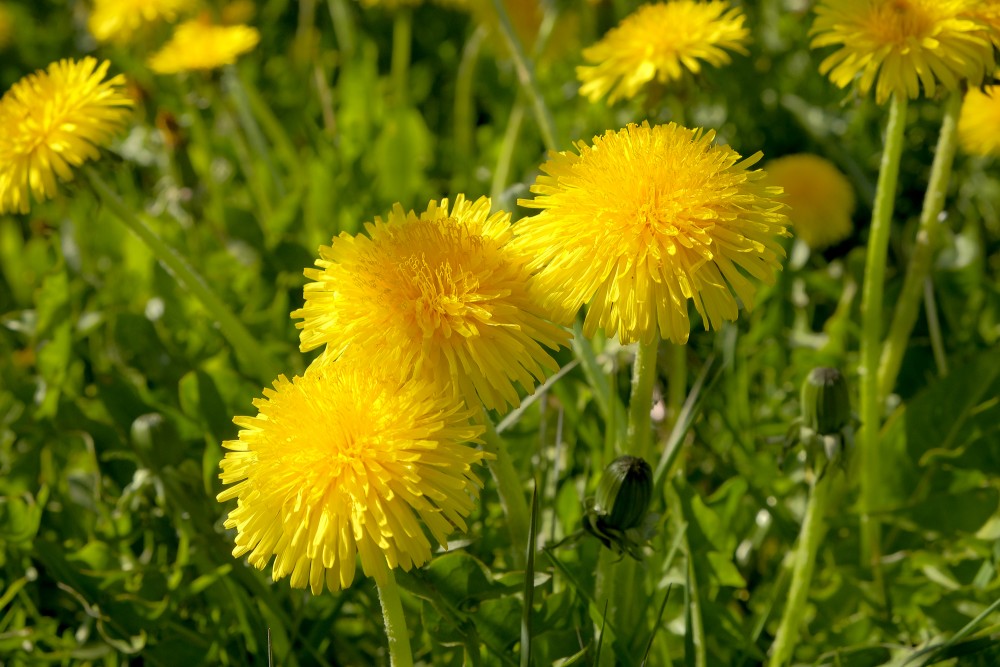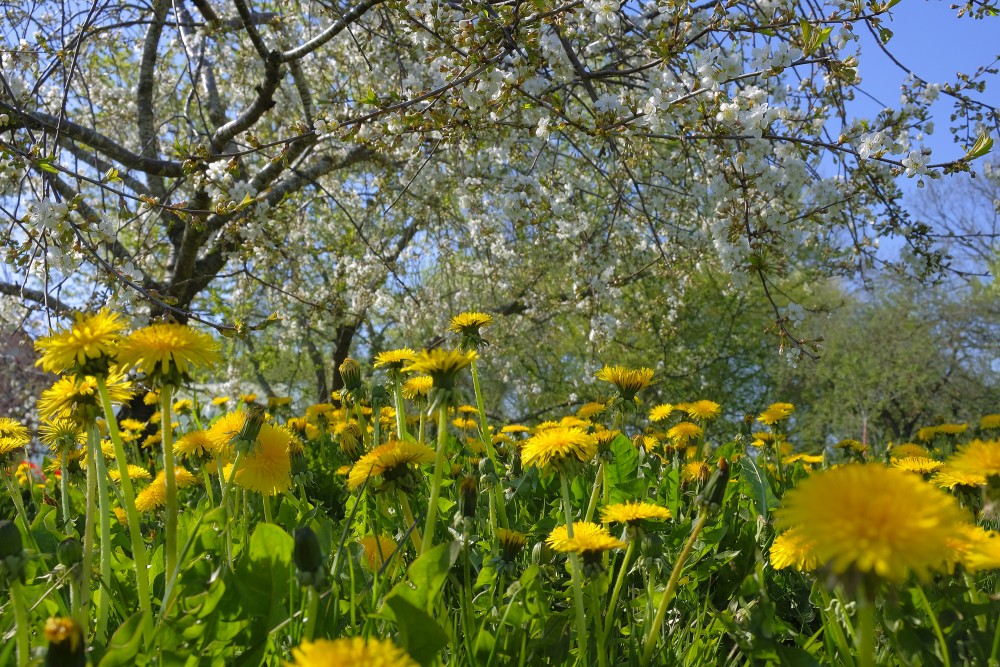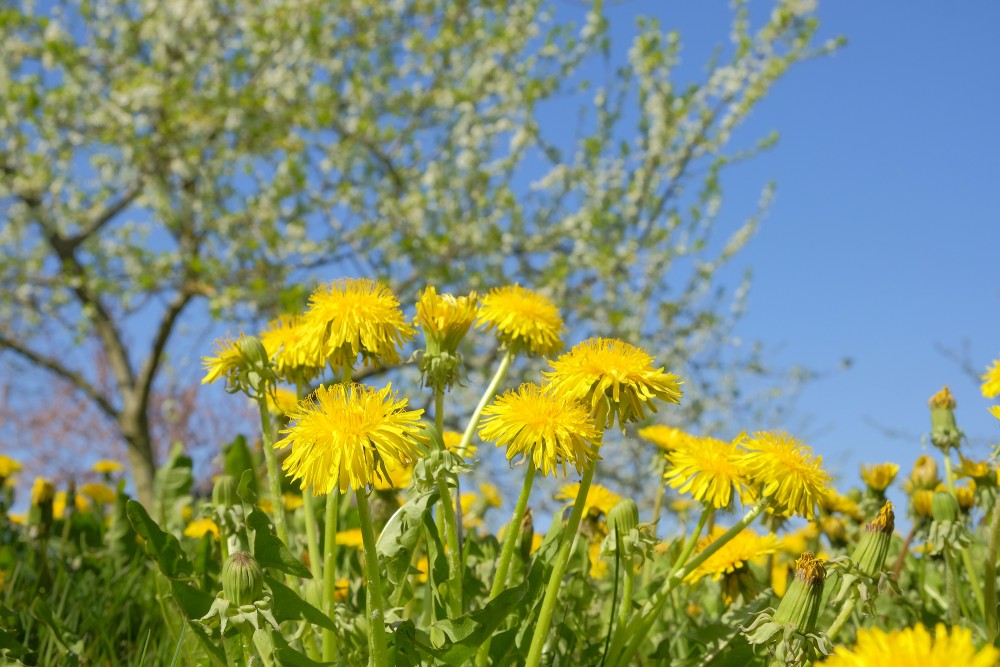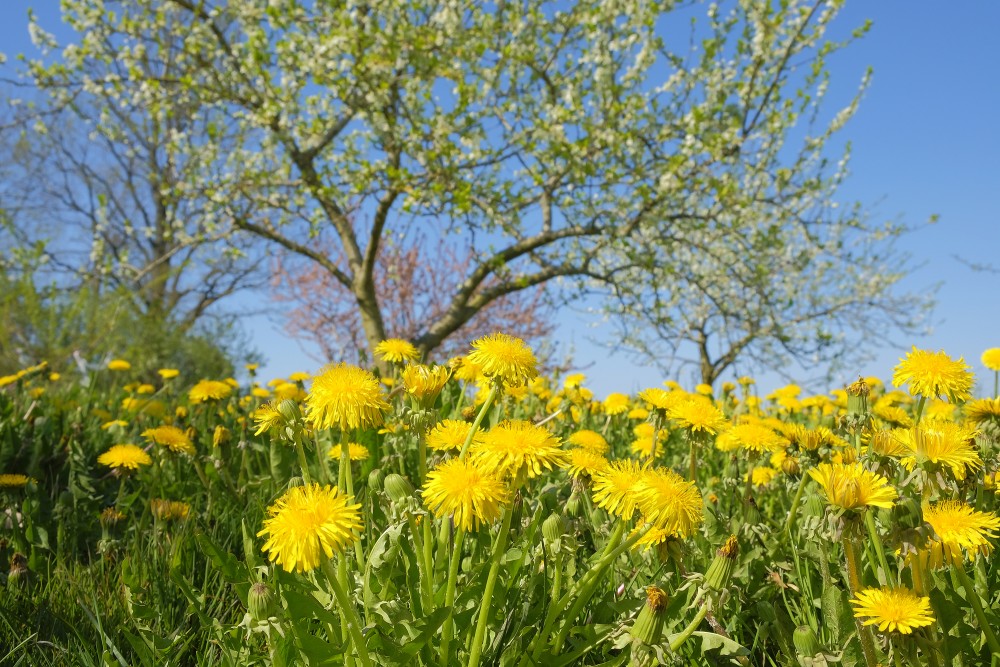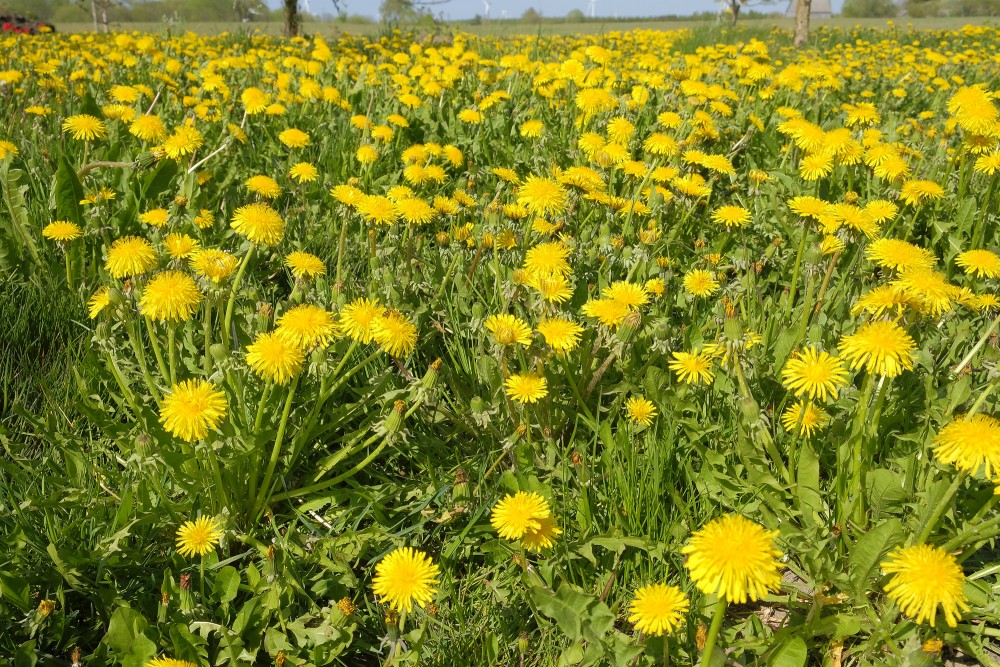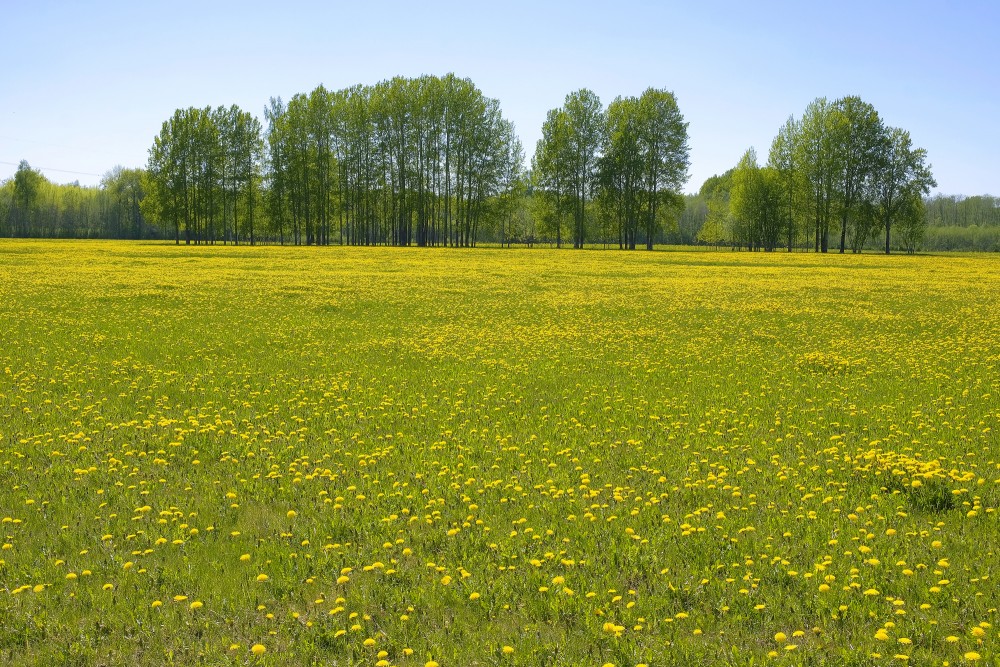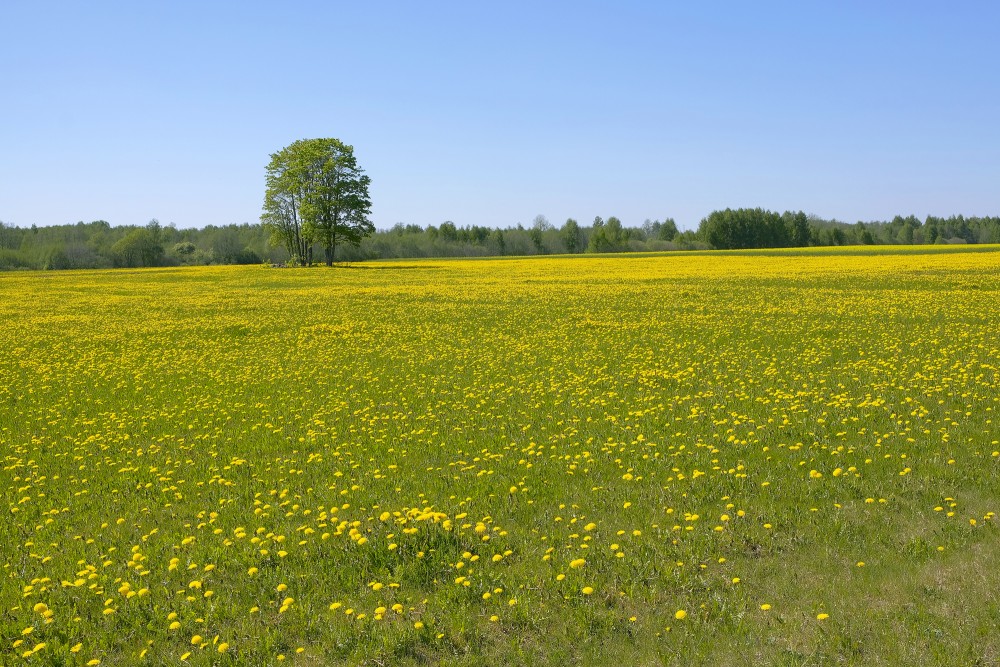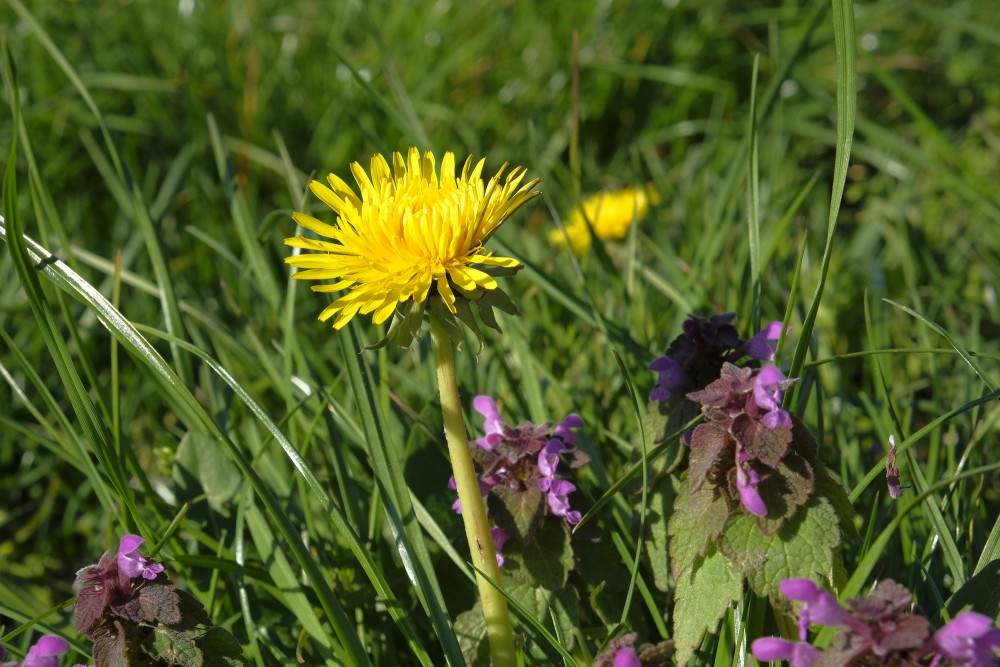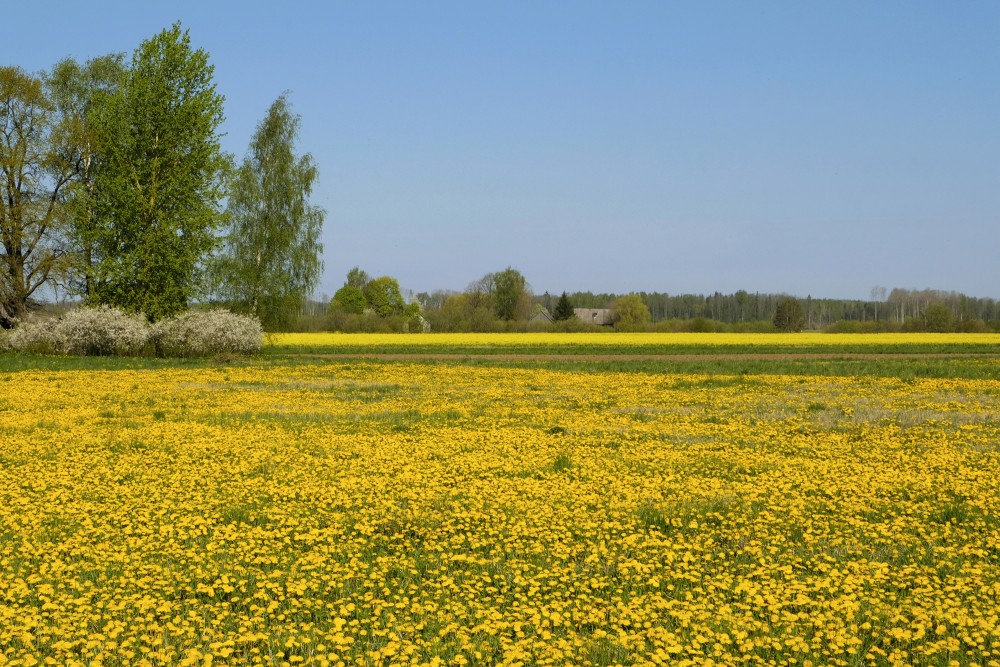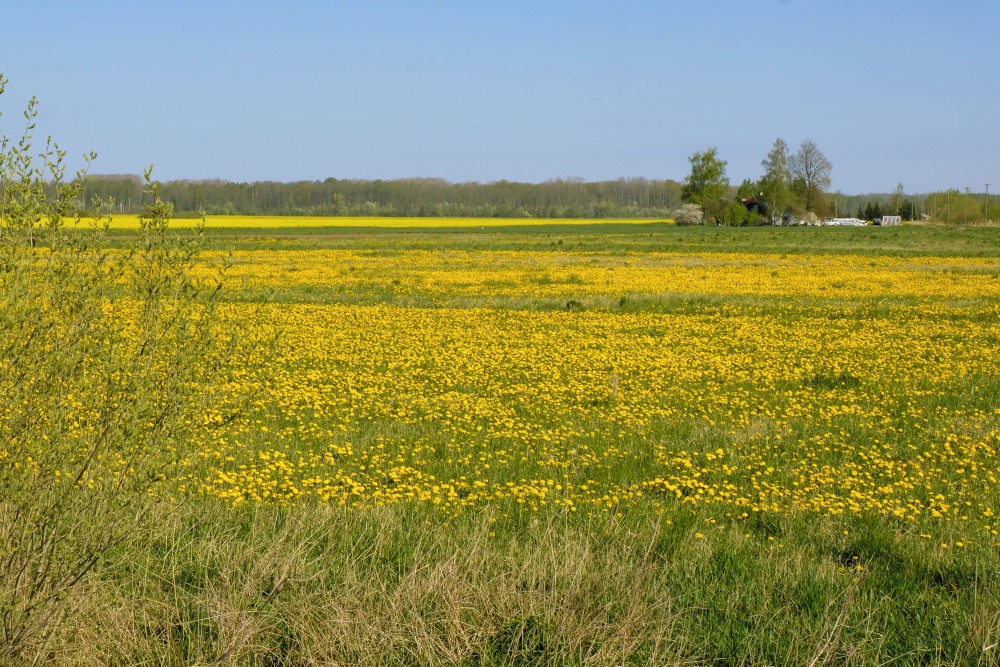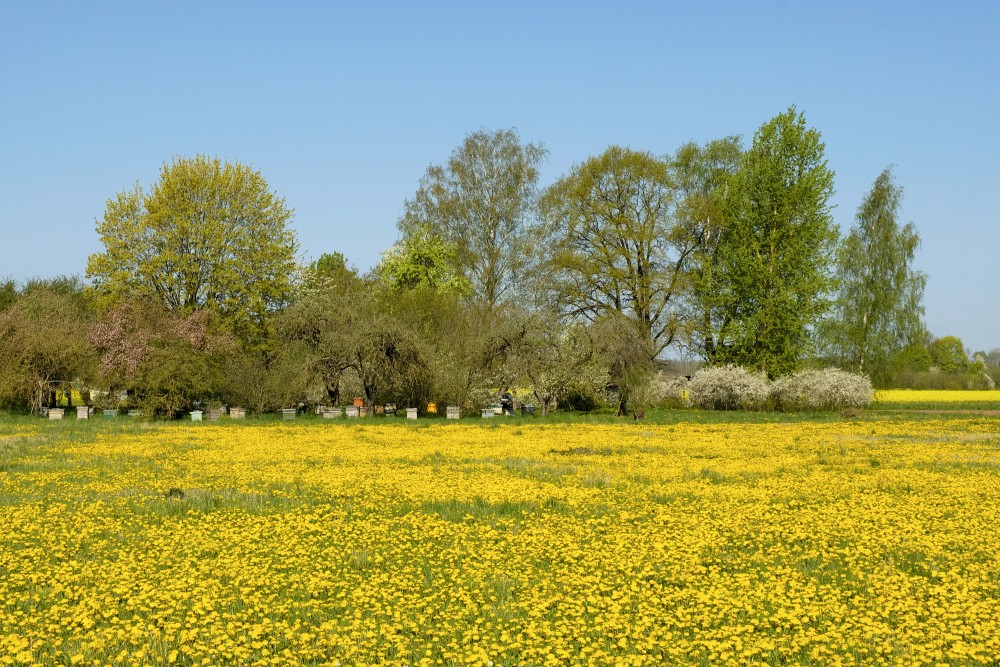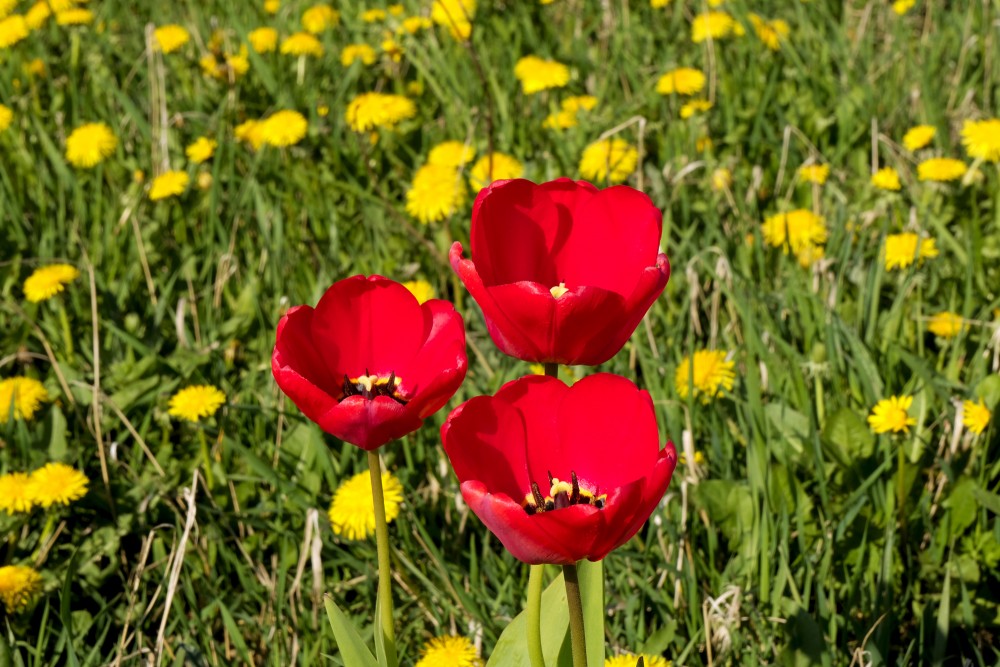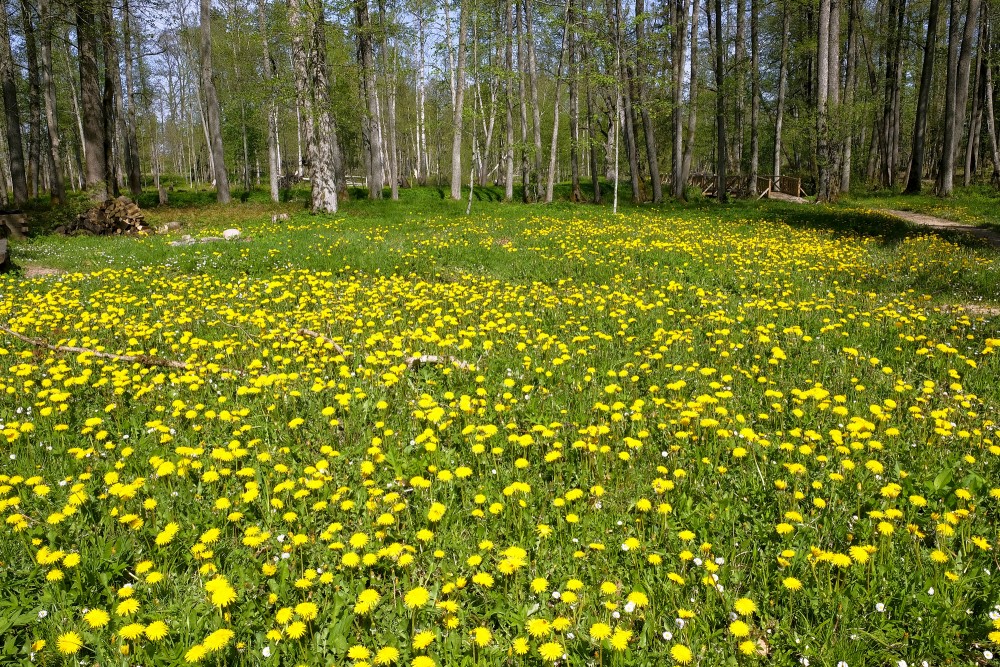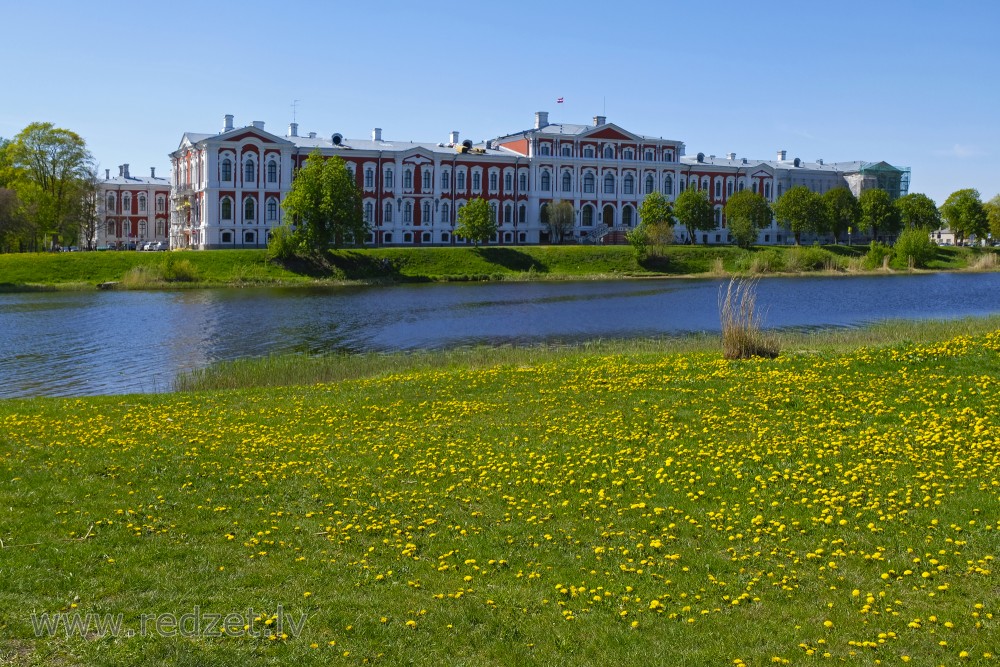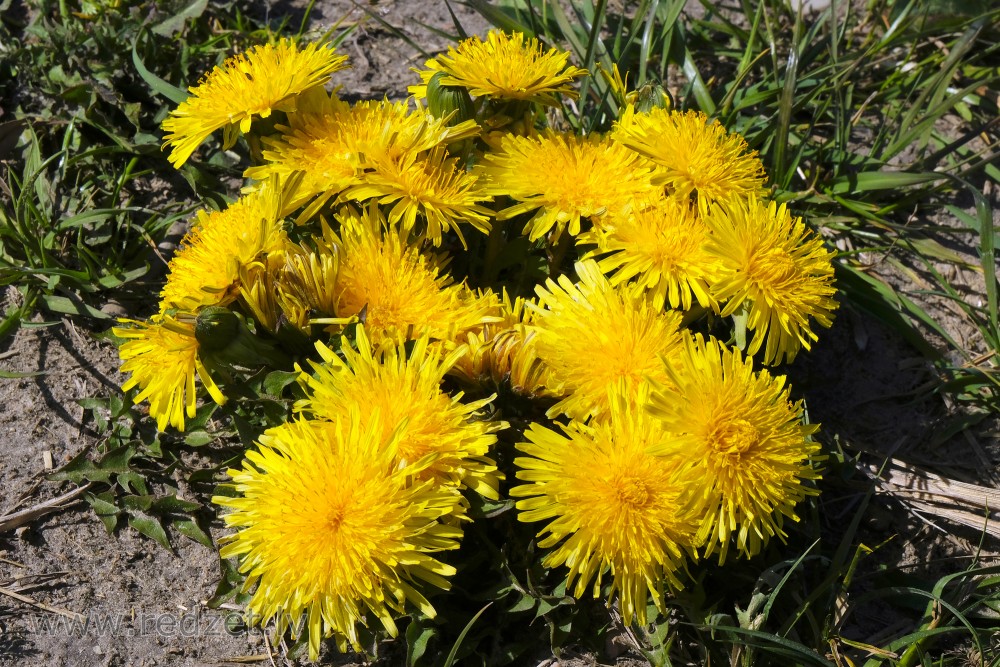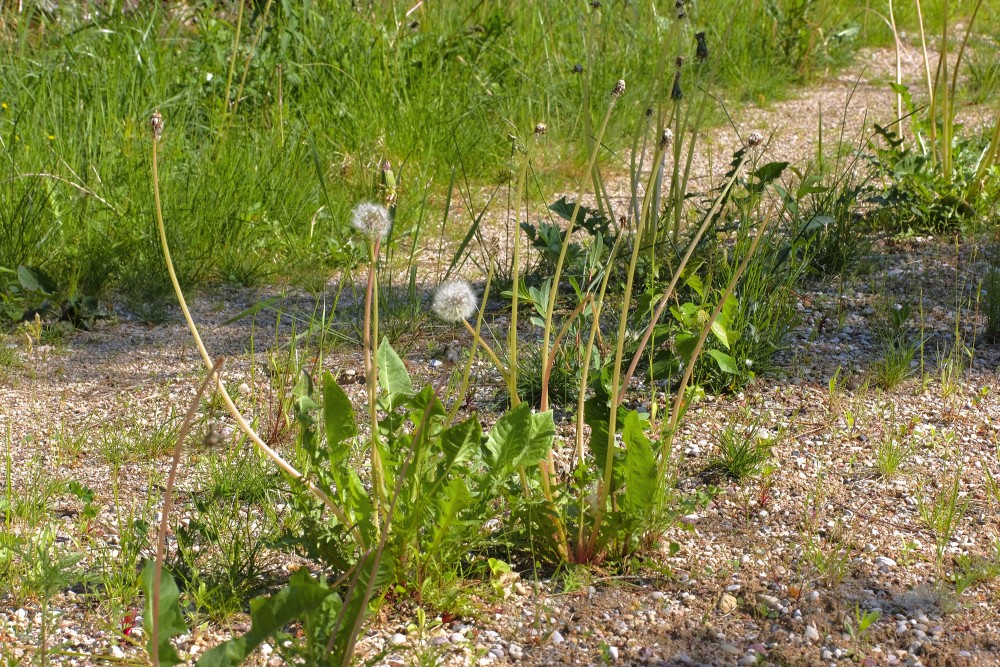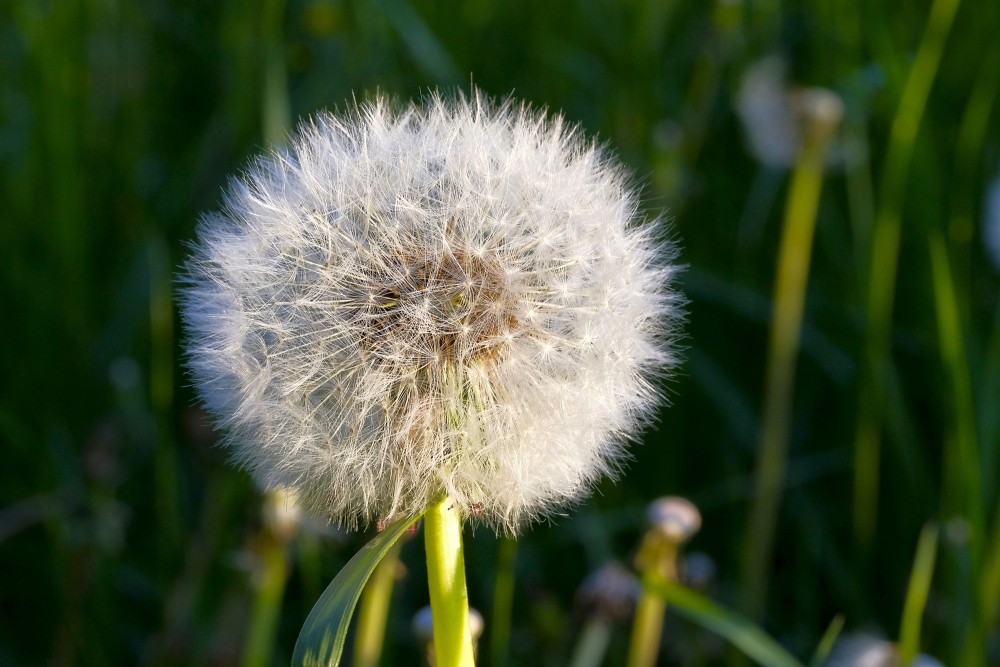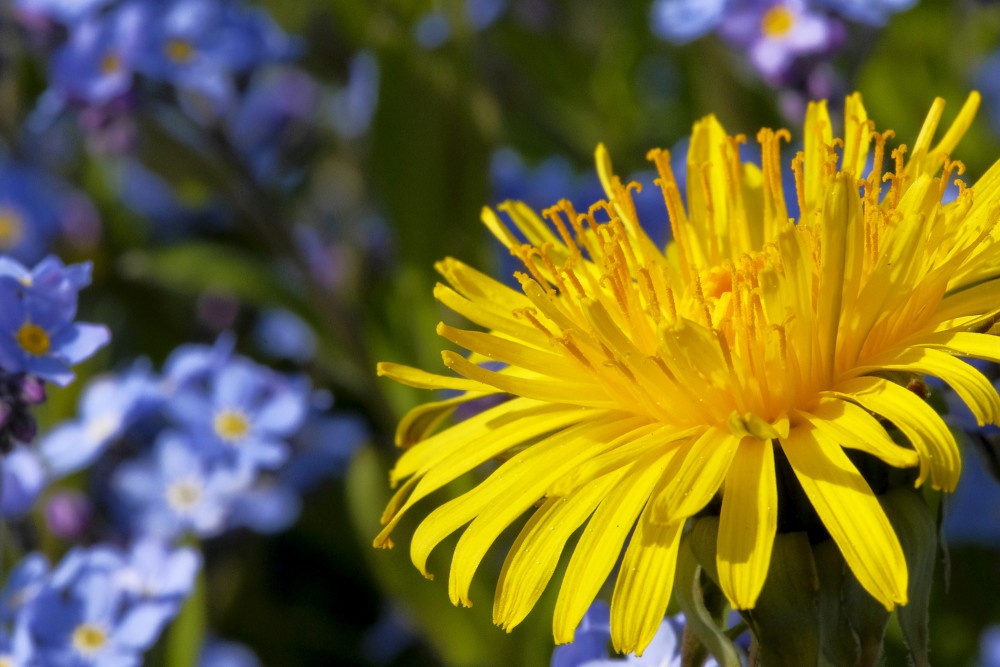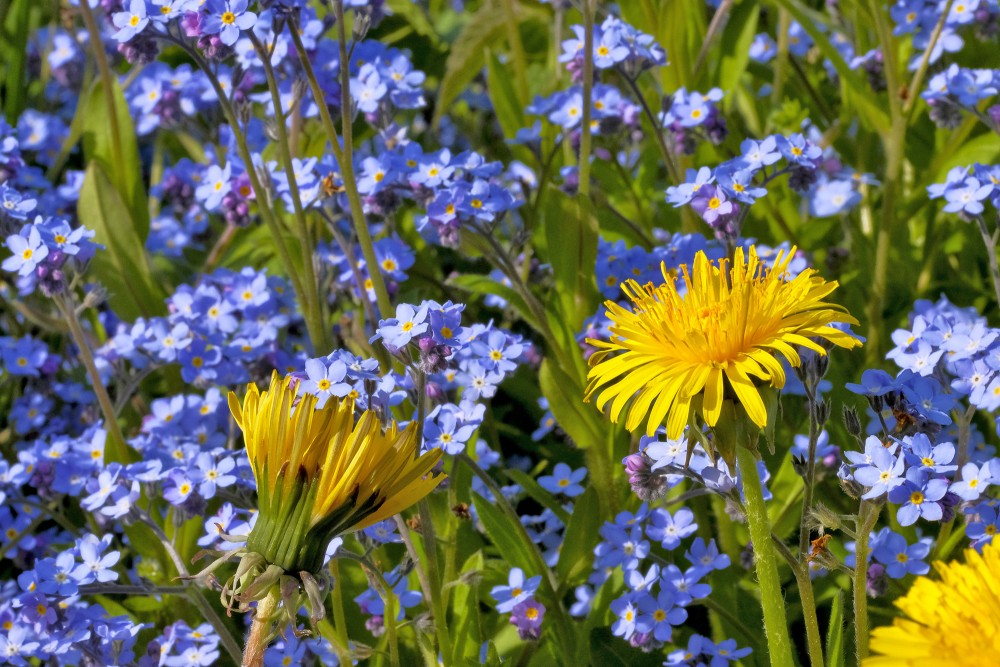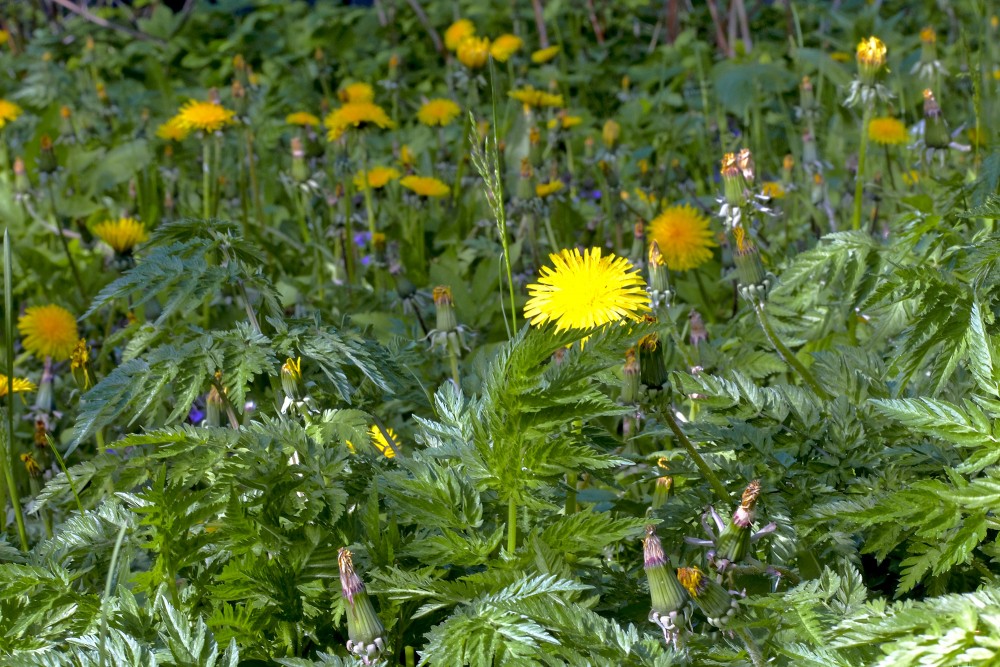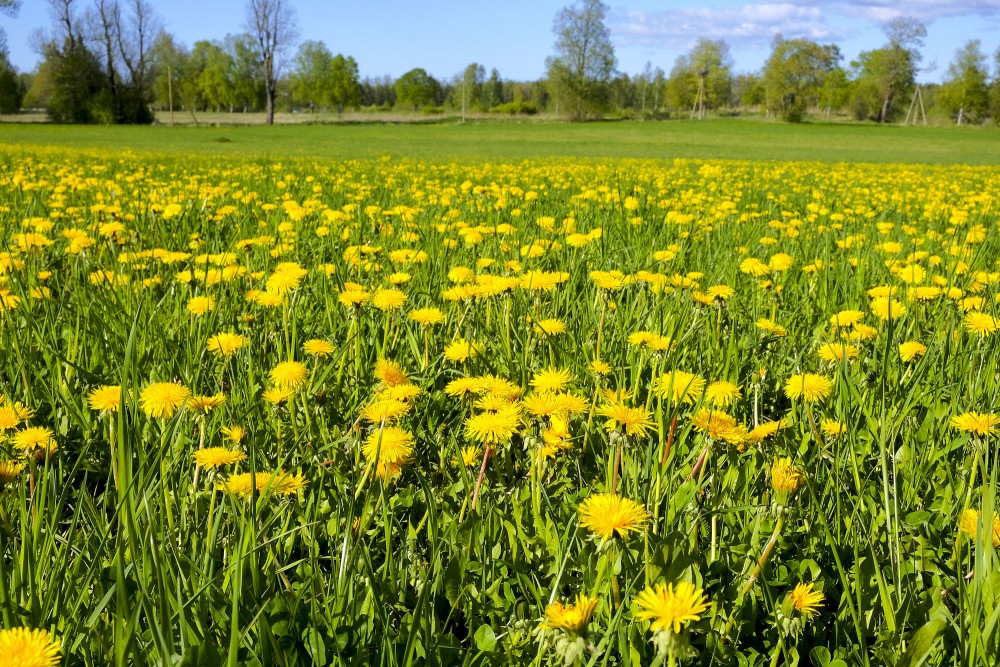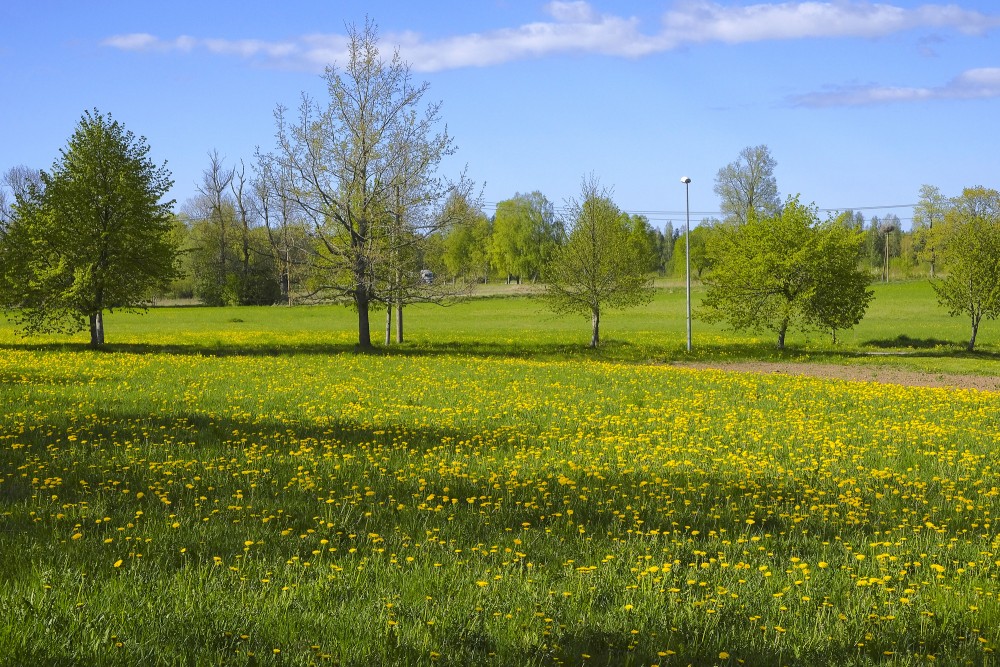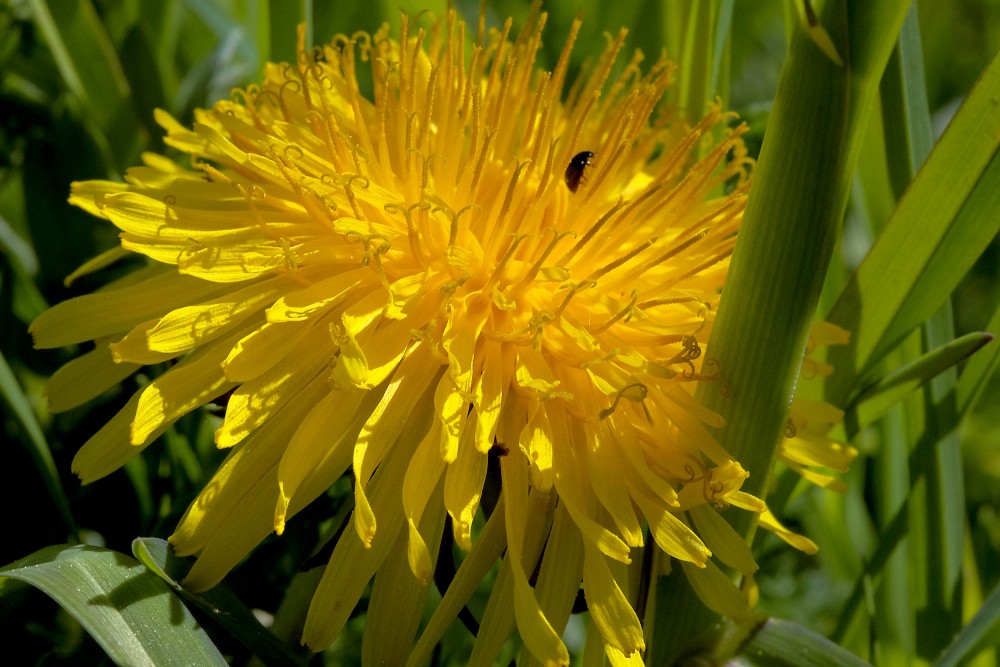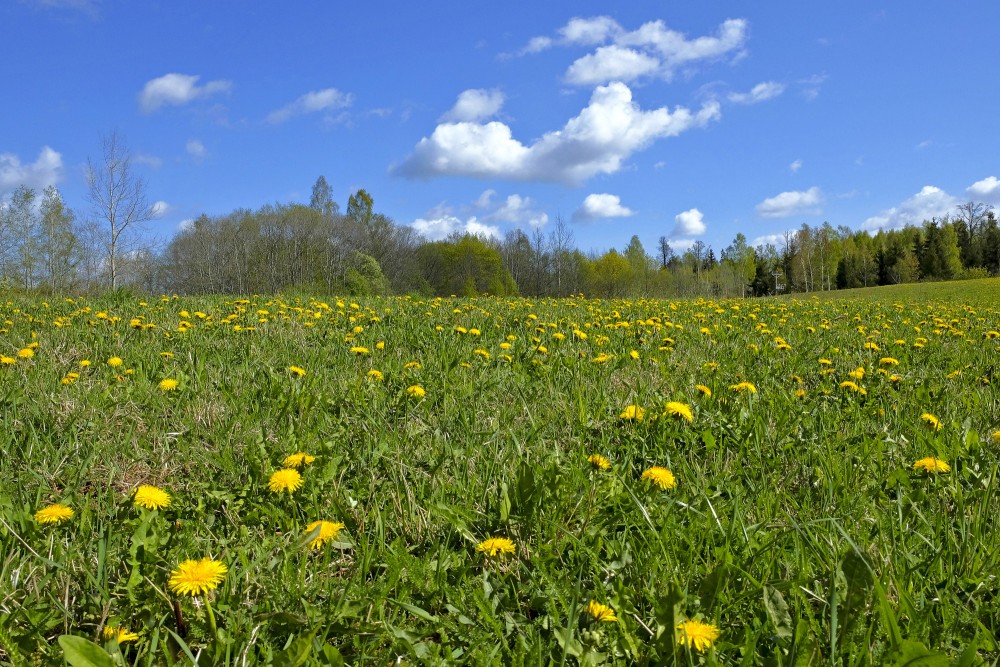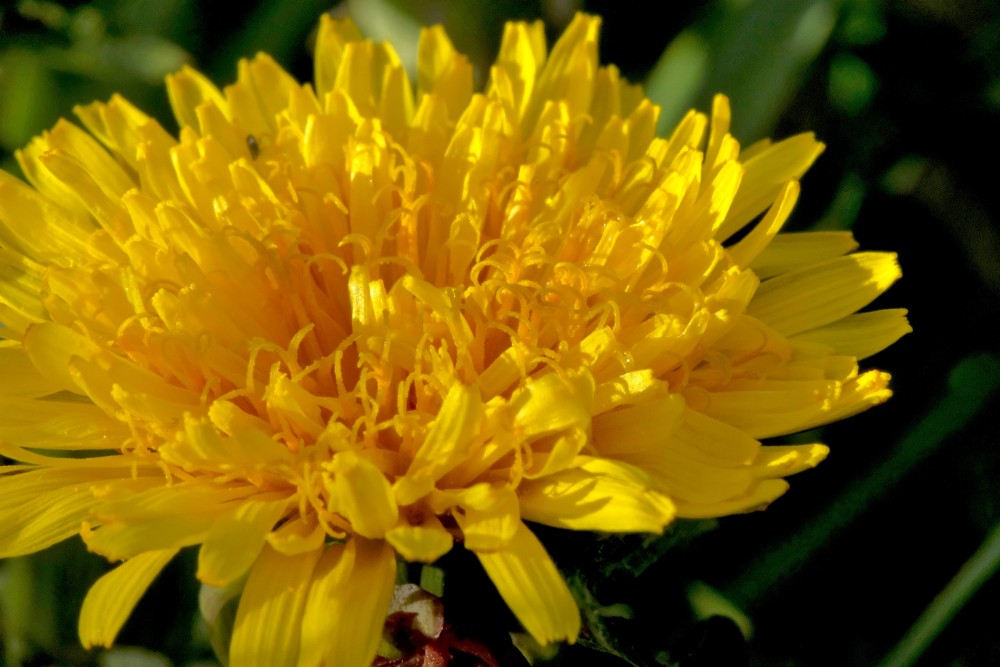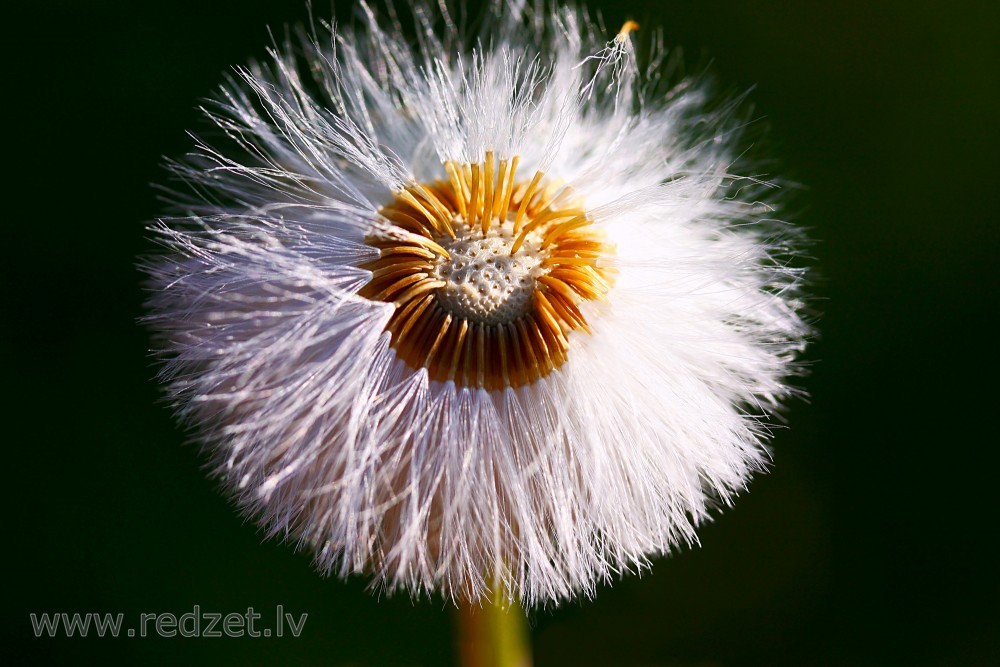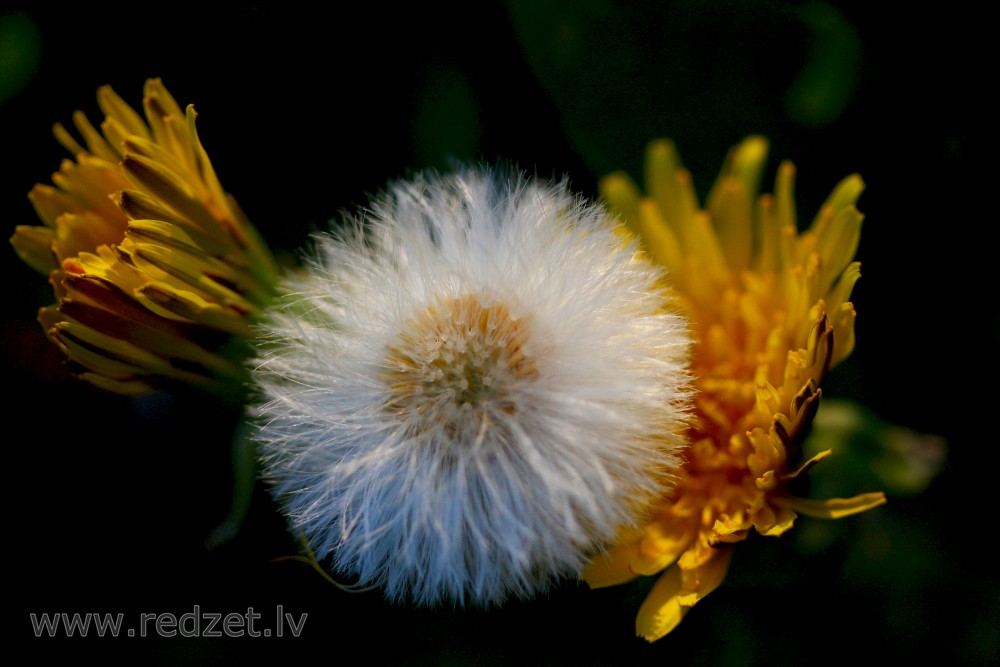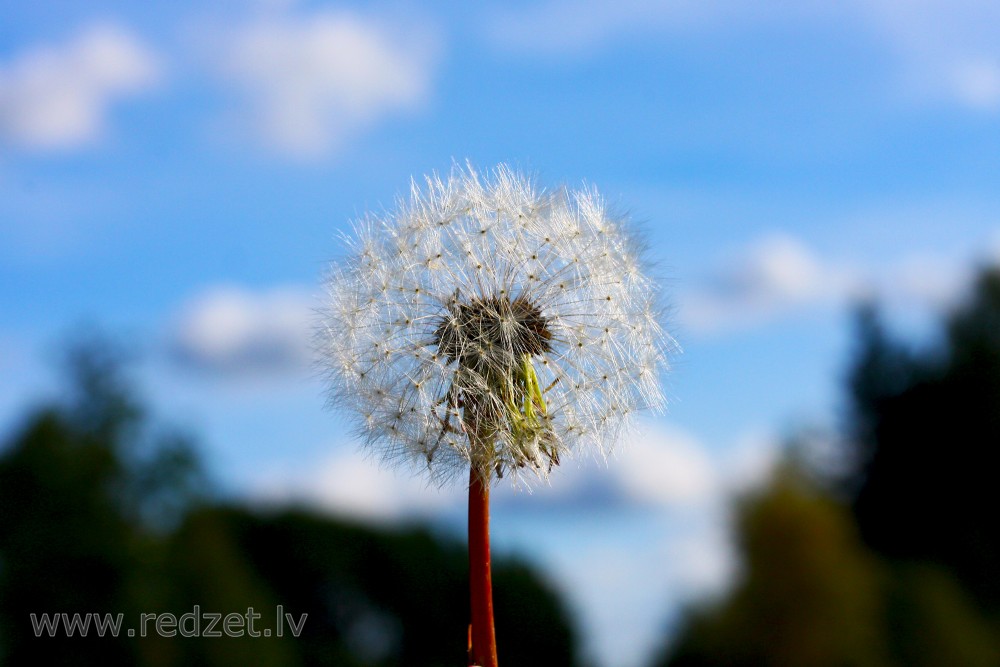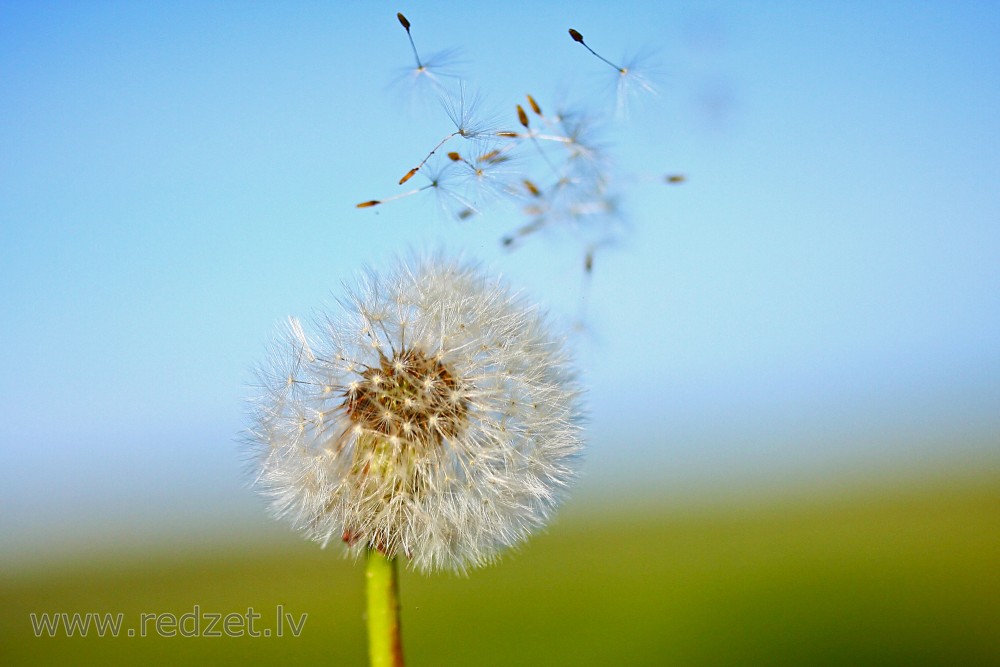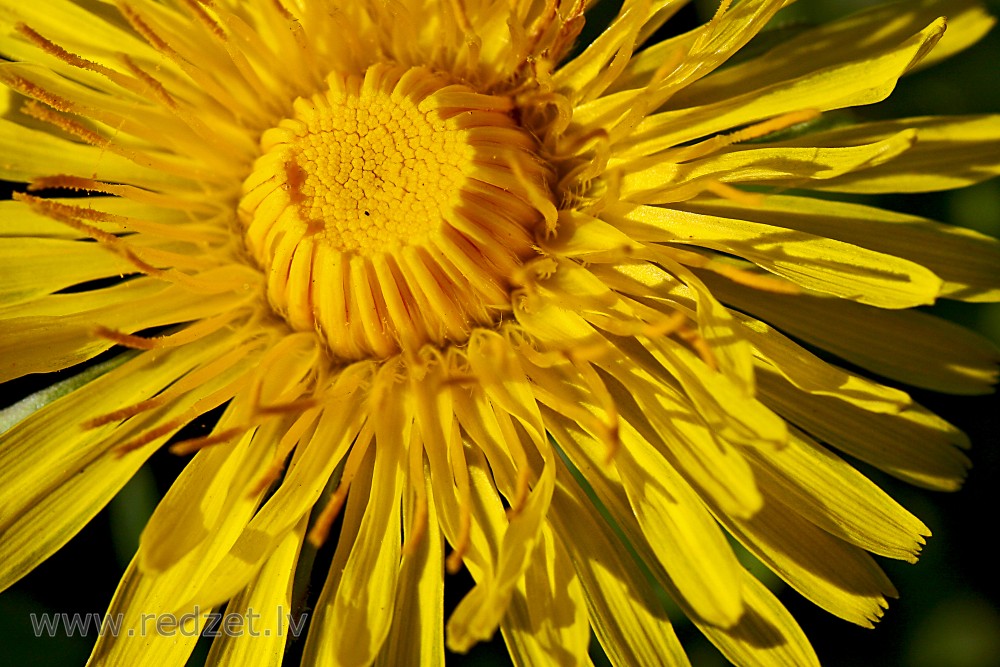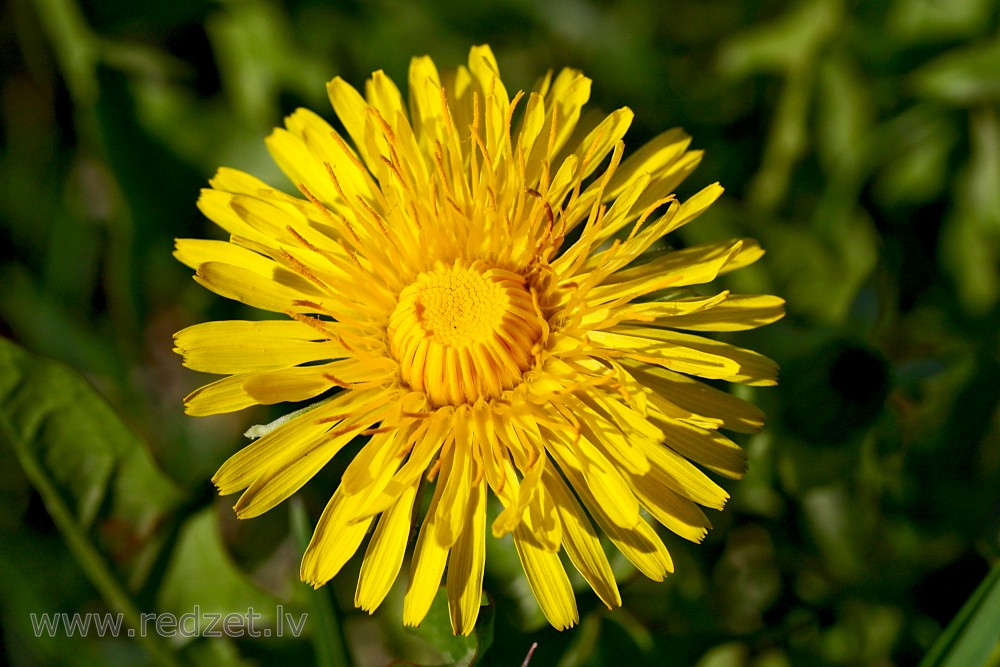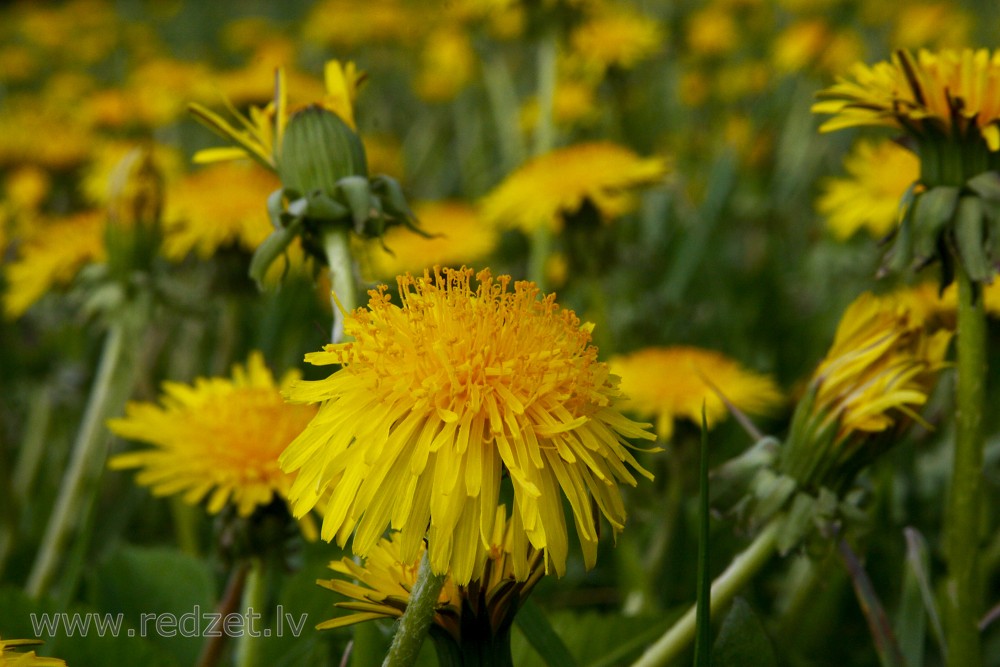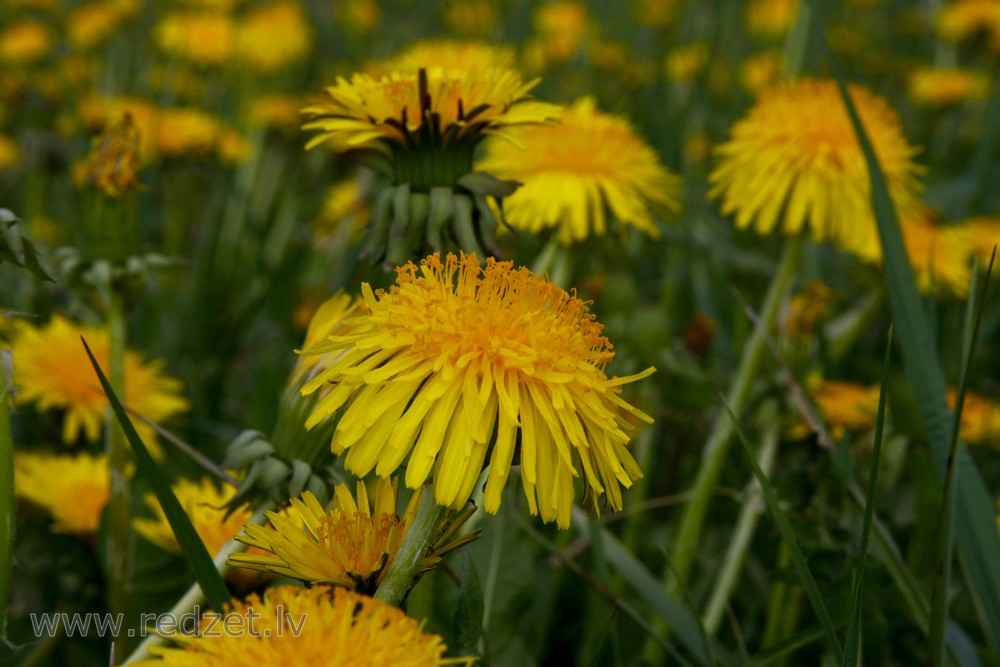Taraxacum officinale (Common Dandelion)
Taraxacum officinale, the common dandelion (often simply called "dandelion"), is a flowering herbaceous perennial plant of the family Asteraceae (Compositae).
It can be found growing in temperate regions of the world, in lawns, on roadsides, on disturbed banks and shores of water ways, and other areas with moist soils. T. officinale is considered a weed, especially in lawns and along roadsides, but it is sometimes used as a medical herb and in food preparation. Common dandelion is well known for its yellow flower heads that turn into round balls of silver tufted fruits that disperse in the wind. These balls are called "blowballs" or "clocks" in both British and American English.
Description
Taraxacum officinale grows from generally unbranched taproots and produces one to more than ten stems that are typically 5–40 cm (2.0–15.7 in) tall, but sometimes up to 70 cm (28 in) tall. The stems can be tinted purplish, they are upright or lax, and produce flower heads that are held as tall or taller than the foliage. The foliage may be upright-growing or horizontally spreading; the leaves have petioles that are either unwinged or narrowly winged. The stems can be glabrous or sparsely covered with short hairs. Plants have milky latex and the leaves are all basal; each flowering stem lacks bracts and has one single flower head. The yellow flower heads lack receptacle bracts and all the flowers, which are called florets, are ligulate and bisexual. In many lineages, fruits are mostly produced by apomixis, notwithstanding the flowers are visited by many types of insects.
The leaves are 5–45 cm (2.0–17.7 in) long and 1–10 cm (0.39–3.94 in) wide, and are oblanceolate, oblong, or obovate in shape, with the bases gradually narrowing to the petiole. The leaf margins are typically shallowly lobed to deeply lobed and often lacerate or toothed with sharp or dull teeth.
The calyculi (the cuplike bracts that hold the florets) are composed of 12 to 18 segments: each segment is reflexed and sometimes glaucous. The lanceolate shaped bractlets are in two series, with the apices acuminate in shape. The 14–25 mm (0.55–0.98 in) wide involucres are green to dark green or brownish-green, with the tips dark gray or purplish. The florets number 40 to over 100 per head, having corollas that are yellow or orange-yellow in color.
The fruits, called cypselae, range in color from olive-green or olive-brown to straw-colored to grayish, they are oblanceoloid in shape and 2–3 mm (0.079–0.118 in) long with slender beaks. The fruits have 4 to 12 ribs that have sharp edges. The silky pappi, which form the parachutes, are white to silver-white in color and around 6 mm wide. Plants typically have 24 or 40 pairs of chromosomes, while some have 16 or 32 pairs.
Ecology
Taraxacum officinale is native to Europe and Asia, and was originally imported to America as a food crop. It is now naturalized throughout North America, southern Africa, South America, New Zealand, Australia, and India. It occurs in all 50 states of the USA and most Canadian provinces. It is considered a noxious weed in some jurisdictions, and is considered to be a nuisance in residential and recreational lawns in North America. It is also an important weed in agriculture and causes significant economic damage because of its infestation in many crops worldwide.
The dandelion is a common colonizer of disturbed habitats, both from wind blown seeds and seed germination from the seed bank. The seeds remain viable in the seed bank for many years, with one study showing germination after nine years. This species is a somewhat prolific seed producer, with 54 to 172 seeds produced per head, and a single plant can produce more than 5,000 seeds a year. It is estimated that more than 97,000,000 seeds/hectare could be produced yearly by a dense stand of dandelions. When released, the seeds can be spread by the wind up to several hundred meters from their source. The seeds are also a common contaminant in crop and forage seeds. The plants are adaptable to most soils and the seeds are not dependent on cold temperatures before they will germinate but they need to be within the top 2.5 cm (1 in) of soil.
T. officinale is food for the caterpillars of several Lepidoptera (butterflies and moths), such as the tortrix moth Celypha rufana. See also List of Lepidoptera that feed on dandelions.
Even though dandelion pollen is of poor nutritional quality for honey bees, they readily consume it, and it can be an important source of nutritional diversity in heavily managed monocultures such as that of blueberries. Honey bees have not been shown to lower their pollination activity on nearby fruit crops when foraging on dandelions.
While not in bloom, this species is sometimes confused with others, such as Chondrilla juncea, that have similar basal rosettes of foliage.[39] Another plant, sometimes referred to as fall dandelion, is very similar to dandelion, but produces "yellow fields" later.
Dandelion flowers can be used to make dandelion wine, for which there are many recipes. Most of these are more accurately described as "dandelion-flavored wine," as some other sort of fermented juice or extract serves as the main ingredient. It has also been used in a saison ale called Pissenlit (the French word for dandelion, literally meaning "wet the bed") made by Brasserie Fantôme in Belgium. Dandelion and burdock is a soft drink that has long been popular in the United Kingdom.
Another recipe using the plant is dandelion flower jam. In Silesia and other parts of Poland and the world, dandelion flowers are used to make a honey substitute syrup with added lemon (so-called May-honey). Ground roasted dandelion root can be used as a non-caffeinated coffee substitute.
Herbal medicine
Historically dandelion was prized for a variety of medicinal properties. It contains a wide number of pharmacologically active compounds.
Dandelion contains flavonoids including luteolin, apigenin, isoquercitrin (a quercetin-like compound), caffeic acid, and chlorogenic acid. Dandelion also contains terpenoids, triterpenes, and sesquiterpenes. Dandelion has been used as an herbal remedy in Europe, North America, and China.
Empiric traditional application in humans of dandelion, in particular to treat digestive disorders, is supported by pharmacological investigations. Several studies have demonstrated further health-promoting properties of either dandelion extracts or individual compounds extracted from dandelion leaves or roots, e.g. anti-inflammatory, anti-carcinogenic and anti-oxidative activities. These diverse effects have mainly been attributed to the presence of various polyphenolics and sesquiterpenes. Although a number of compounds were characterized in dandelion plants, studies on the concentration of individual constituents are rather limited and merit further attention. Moreover, the diverse pharmacological activities of dandelion or individual compounds isolated thereof have only been assayed in in vitro or in in vivo tests using laboratory animals, and the results obtained may not necessarily be portable to the situation in humans. Some results, e.g. concerning possible diuretic activity, are even contradictory and require a thorough reinvestigation.
The Dandelion in Herbal Medicine
If not for its association as a weed, the dandelion (Taraxacum officinale) is among the most beautiful and robust wild flowers. The hearty dandelion plant is ubiquitous, yet very few people know of its power as a healing plant. From roots to blossom, every part of the plant contains healing properties.
The Less-known Healing Properties of Dandelion
Dandelion is used for weight-loss, contributes to vitality, enhances the taste of food, improves metabolism, and much more.
Practitioners of folk and monastic medicine (or, Klosterheilkunde) believed that nature provided this ancient medicinal plant to revive our metabolism after the cold and dark season. Strangely, we found no record of the healing power of the dandelion in European herbal books until the 15th century. Even Hildegard of Bingen seems to have either overlooked the plant or it was lost in translation.
The Dandelion in Hildegard Medicine
The names Hildegard used for some of the plants in her writings are difficult to identify based on modern nomenclature. Similarities in their attributes coupled with translations from Hildegard’s own words into Latin, again into German and beyond, means that some plants may not have been named as they are today.
Hildegard called one plant of dubious identity “Sunnewirbel“. In the Middle Ages this term was used interchangeably for chicory (or wild succory), rock rose, or dandelion. So while it is possible that Hildegard recognized the medicinal qualities of dandelion, we just can’t be certain.
Medicinal Use of Dandelions
Thanks in part to its bitter flavor profile, dandelion contributes to the foundation of traditional German medicine as a tincture, tea, or extract to combat obesity and high cholesterol. By improving metabolism and through efficient blood cleansing and detoxification, dandelion is thought to contribute to relieving gout, rheumatism, liver and bile ailments, blood ailments, ulcers, skin, and other symptoms of aging. Here it is recommended as a detoxifying agent in the context of a spring cleanse or fall cure.
Modern research (download document here) is sparse but does indicate the potential medicinal uses of dandelion roots for inflammation modulator, diuretic, digestive stimulant, insulin stimulant, demulcent, prebiotic, immunomodulator, antiangiogenic, and antineoplastic.
Dandelions as a Super-Food
The Dandelion is not only used to treat existing symptoms, but also to preserve good health and prevent illnesses. Dandelion is an excellent source of vitamins and minerals. Specifically, when eaten raw in a salad, dandelion contributes about 40 times the vitamin A found in lettuce. It has 9 times the vitamin C, 4 times the vitamin E, 8 times the amount of calcium, 4 times the magnesium, 3 times the amount of iron, and 2 times the protein as found in ordinary lettuce.Dandelion also possesses meaningful amounts of potassium and other essential minerals known as electrolytes. Hildegard would be especially pleased at the amount of trace elements and bioactive plant substances and flavoniods resulting in the bitter flavor qualities of dandelion.
If you have no desire to pick the dandelion fresh, you can use dandelion powder, generally made and powdered from gently dried dandelion juice.
Dandelion Tea
Dandelion tea stimulates digestion and acts like a diuretic food or drink to help reduce swelling legs. Most traditional German herbal remedies call for tea preparations using the whole dandelion plant.
The tea preparation works best with dandelions harvested during the spring, before flowering. First, clean the dandelion by brushing it off, using a dry cloth or gentle brush (no washing with water and / or soap). Cut the plant lengthwise into strips and dry in a warm and arid place for a few days.
